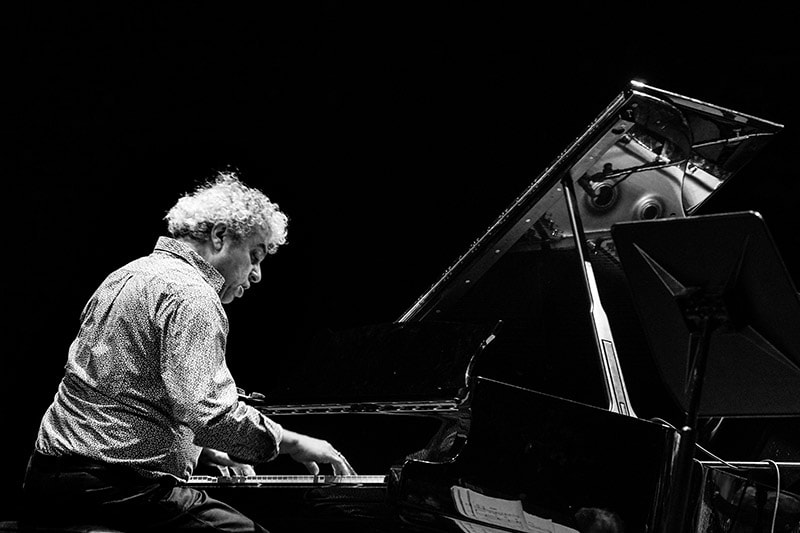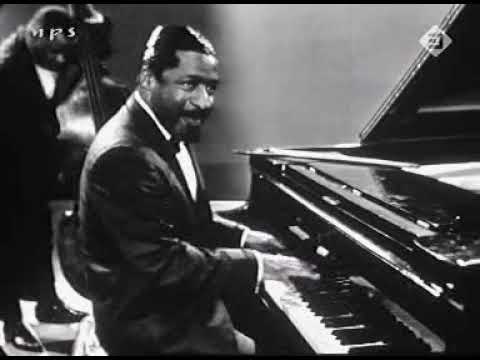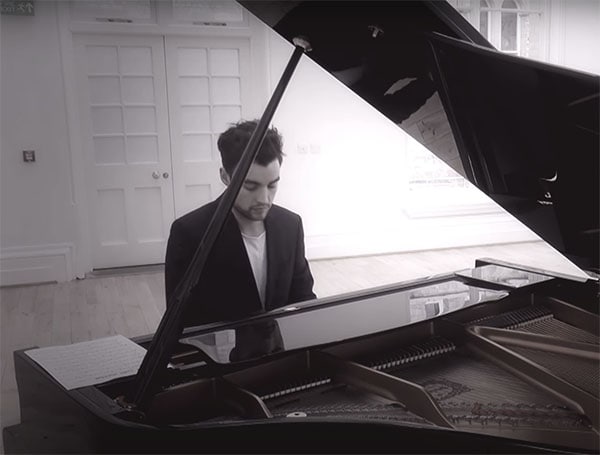
Hayden Hill
Hayden founded PianoGroove in 2015 with the goal of making the world a more musical place. He shares his love for jazz piano through his online courses and manages the community area of PianoGroove.
Live Seminar Resources
Live Seminar Resources
PDF Downloads
- Silent Night Chord Chart
Join PianoGroove Pro to access all downloads and learning resources.
Download theory supplements, midi files, chord changes and full note-for-note transcriptions of every lesson.
- The Christmas Waltz Chord Chart
Join PianoGroove Pro to access all downloads and learning resources.
Download theory supplements, midi files, chord changes and full note-for-note transcriptions of every lesson.
- Christmas Time Is Here Chord Chart
Join PianoGroove Pro to access all downloads and learning resources.
Download theory supplements, midi files, chord changes and full note-for-note transcriptions of every lesson.
Related Lessons
Forum Threads
Seminar Description
Seminar Description
Learn the secrets to reharmonising Christmas songs. We reharmonise the basic 1-4-5 changes of the tune “Silent Night” to add interesting voicings and passing chords.








Hi Hayden,
great video, thank you very much.
May I ask you 2 questions:
Silent Night – why do you use a #11 chord in the second bar ? Sure, because of the melody it has to be an E. And Bb chord is also clear – #11 with E is a Bb chord. But WHY a #11 at this point ?
And why a dominant chord ?
Second question: E minor in bar 3 is clear. But why b5 ? What is the reason for flat 5 ?
Thank you and best regards,
Olli
Hi Oliver,
I’m glad you enjoyed the session. I will add the chapter markers shortly.
Regarding the C Major 7 to Bb7#11 chord movement, this exact question was asked in the forum and Tuomo provided an in depth answer, you can see that post here: community.pianogroove.com/t/christmas-time-is-here/7559
You will see this same movement in many other tunes, Christmas Time Is Here for example which starts with Fmaj7 to Eb7#11, and also the tune “The Days Of Wine & Roses” which starts with the same 2 chords (Fmaj7 to Eb7#11).
The explanation in the forum post above contains more information.
For your second question, when we play a minor chord, we can always add the b5. You can see this as an ‘alternate colour’ that we can apply. The -7b5 chord is found in minor 251 progressions (when the 1 chord is minor) however, we can also use the b5 on the ii-7 chord in major 251 progressions. Additionally, when the have the b5 on the ii-7 chord, it sets up ‘the tone’ or the ‘the mood’ to add alterations to the V7 chord. You will see that I play the following A7 chord with a b9 – which is in fact the same note as the b5 of ii-7 chord (Bb) – and this adds more colour, tension, an interest to the progression. In essence, we are substituting minor harmony in the place of major harmony.
Cheers,
Hayden
Great ! Thanks a lot.
My pleasure Oliver – the chapters will be on this seminar in 5 minutes or so.
Let me know if you have any further questions with the material.
Cheers,
Hayden
Oh my. This one will keep me busy for a while. I’m not a fan of the, shall I say, serious Christmas carols like Silent Night, but I love your reharmonization of it. Exactly the kind of style I’m aiming at. And, largely thanks to my past year on this site, I can watch what your doing, left or right hand, and concepts that are now familiar start jumping out at me.
Thanks Dan – I’m glad you enjoyed the arrangements.
That’s great to hear on your progress. To start it’s always nice to simply copy and emulate a playing style that you like and with time the core components of what makes that playing style will start to jump out at you, exactly as you say.
Check out my new course here that I mentioned in the seminar: pianogroove.com/jazz-piano-lessons/functional-harmony-course/
This is designed to give students more harmonic freedom with voicings and common progressions. The first module is on the key of C Major, and the next one will be on the key of G Major. Then we will cover other keys too.
Cheers,
Hayden
“Derived from diatonic chords”–I don’t get this. I hear you play F#-7 B7 E-7 ‘A7 before going to D-7 G7 Cmaj7, and my ear tells me it sounds wonderful. But F# isn’t even in the key of C. My understanding was that diatonic chords mean those that are entirely within the key. What have I misunderstood?
Hmm maybe I should just check out the functional harmony course.
Hi Dan,
If we think of the C Lydian Mode we have F# (the #4) in the scale which gives us that F#-7b5 instead of Fmaj7 (the IV chord in the C Ionian Mode/C Major Scale).
I prefer to simply think of the F#-7b5 and B7 as a 25 into the iii-7 chord (E-7).
Notice that we also ‘tweak’ the other diatonic 7th chords: B-7b5 becomes B7, and A-7 becomes A7. This creates a ‘stronger pull’ into the E-7 and D-7 respectively.
Yes if you check out the new course on functional harmony I explain this is more detail and show many variations that we can add to these voicings and progressions.
Cheers,
Hayden
Really Love this!!! Do you plan on posting the lede sheet?
Hi Harry 👋
I’m glad you enjoyed the session.
Yes please scroll down and see the “Live Seminar Resources” box in the bottom right hand side of this page. Click the “View All Seminar Resources” button and this will show you all 3 PDF files that can be downloaded as well as related lessons and forum threads.
Let me know if I can help further.
Cheers,
Hayden